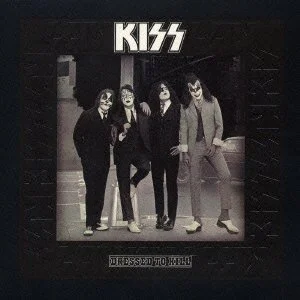I’m All Lost In, #105: Fauré; NyQuil; Rock and Roll All Nite (and RIP Diane Keaton).
I’m All Lost In…
the 3 things I’m obsessing about THIS week.
#105
1) Fauré’s Adagios
I already have a few of late-19th-century French composer Gabriel Fauré’s stunning pieces in my music library. I’m a fan. I’m a fan of post-Romantic composers in general; a school that started pointing classical music toward the pending future of jazz, pop, ambient, and the avant-garde. Or more simply put, toward Fauré’s compatriot and successor, Erik Satie. But I was not prepared to be unequivocally floored by the Fauré piano quartets I saw performed live at the Nordstrom Recital Hall upstairs at Benaroya on Sunday afternoon (No. 1 in C minor, Op. 15 and No. 2 in G minor, Op. 45.) Thanks for the ticket, Rob.
Specifically, I was mesmerized by the otherworldly adagios; the third movement in both pieces.
I find chamber music (small jazz combos too) particularly satisfying because of the way the gentle traces of melody, lilting figures, and daring rhythms are laid out in front of your very eyes, making them easy to track as they weave through one another.
Following the gradual ascension into tranquility in Fauré’s rhythmic yet calm adagios, all the more so.
2) NyQuil Lullaby
Blah. I came down with a head cold this week.
Thankfully, I found an old bottle of NyQuil in my medicine cabinet; the mysterious green flavor. And despite the 2018 expiration date, it was either that or popping sugary Ricolas all night.
Oh my word. With my body dearly in need of rejuvenation… and with a playlist prompted by Sonny Rollins and Dizzy Gillespie’s lulling 1958 duet “Sumphin’” mooning quietly in the background, my potentially miserable nights of congestion and coughing were transformed into cozy NyQuil sojourns of peace and slumber.
I was also happy, patriotically so, to discover that one of NyQuil’s active ingredients is on Trump’s quack list of nanny state no-nos: the verboten medication, acetaminophen!
Coincidentally, acetaminophen has long been one of my favorite words; it’s British counterpart paracetamol is nearly as pleasing to utter as well.
Lines of poetry I wrote in 1989: Peanut butter milk/acetaminophen imagination.
3) Two 1970s Icons
Diane Keaton with Dunlop tennis racket in Annie Hall, 1977
Before I reminisce about Ace Frehley’s delicious Gibson Les Paul guitar crunch, I must say RIP to another 1970s icon who died this week, American treasure, Diane Keaton. I grew up in a Woody Allen household adoring 1973’s Sleeper and tailing my parents to every new Allen movie. This included an in-the-theater viewing of Keaton’s big-deal star turn in 1977’s Annie Hall.
I kid you not, as a little boy, I got anxious when Annie Hall won the Oscar for best picture; I was fearful of an antisemitic backlash because Allen’s film bested playground favorite Star Wars. But I took comfort knowing how cool Keaton was in her tie and vest.
I had all but forgotten about another powerful Keaton performance, though: Her role as journalist/feminist Louise Bryant in 1981’s Reds.
Wonderfully, that’s the Keaton movie I somehow ended up watching to pay respect late at night this week.
And make no mistake, despite starring magnetic Warren Beatty as protagonist communist John Reed, it was feminist Keaton’s movie.
One of the many Keaton tributes published this week, NYT film writer Alissa Wilkinson’s essay on Keaton’s “career inflection point” in Reds, nails it:
“Reds” is a story of idealism that is met with the full force of historical realism, and while ostensibly Reed is the main character, it’s really Bryant who has to live out the full story: She encounters Reed’s beliefs, lives alongside them, lets them change her and then has to live with the consequences after the heroics have run their course.
That’s why her dramatic performance is so remarkable in the movie, and probably why so often Beatty lets the camera follow her, not Reed, through the most dramatic scenes.
Sadly, another 1970s giant also died this week: The Spaceman, Kiss guitarist, Ace Frehley.
Kiss’ 1975 touchstone double LP record jacket that I’ve tried to replicate many times…
Like all 9-year-old boys in 1976, Kiss was a thing for me. Honestly though, with some notable exceptions—like 1) the time I first heard Kiss on the radio (cray-zay upstairs in Aaron Zitner’s bedroom when the miraculous Rock and Roll All Nite single was crashing the airwaves in 1975) or 2) all those hours I spent staring at the Kiss Alive back cover photo while my older brother played the four disc masterpiece repeatedly on his turntable—I wasn’t a fan. I was more of a a snobby detractor…until senior year of high school nearly 10 years later. At 17, with some nod and wink, I ventured back to Kiss’ first few LPs, including 1975’s Dressed to Kill (featuring Rock and Roll All Nite).
Kiss’ third album, 1975’s Dressed to Kill. Frehley, 2nd from left.
I was suddenly and nostalgically smitten with their 1970’s hard rock sound. Frehley’s bitchin’ (there’s no other word for it) distortion-pedal guitar was such a refreshing assault on the clenched, banal sound of the 1980s .
I guessed correctly that my friend Karen’s older sister, all grown up and off to college, had left her junior high Kiss LPs behind. Without any questions, I convinced Karen to “loan” me Jennifer’s collection of early Kiss LPs, along with 1978’s perfect greatest hits collection, Double Platinum. Frehley wasn’t usually the songwriter, but with his bottom heavy power chords somehow exuding hot high end, Kiss hits like Deuce, Strutter, She, Dr. Love, Parasite (which Frehley did write), and Cold Gin (also by Frehley) served as an antidote to the cramped digital EQ that was suffocating contemporary radio.
The Spaceman’s gnarly Les Paul sound stuck with me.
40 years later, in one of this year’s first weekly roundups [I’m All Lost In, #65, 1/12/25], I had this to say about the starlet guitarist fronting a garage rock band that was killing it at a small local bar.
Blazing a Chuck Berry/Ace Frehley electric guitar stance….
RIP, Ace. Long may you blaze.



